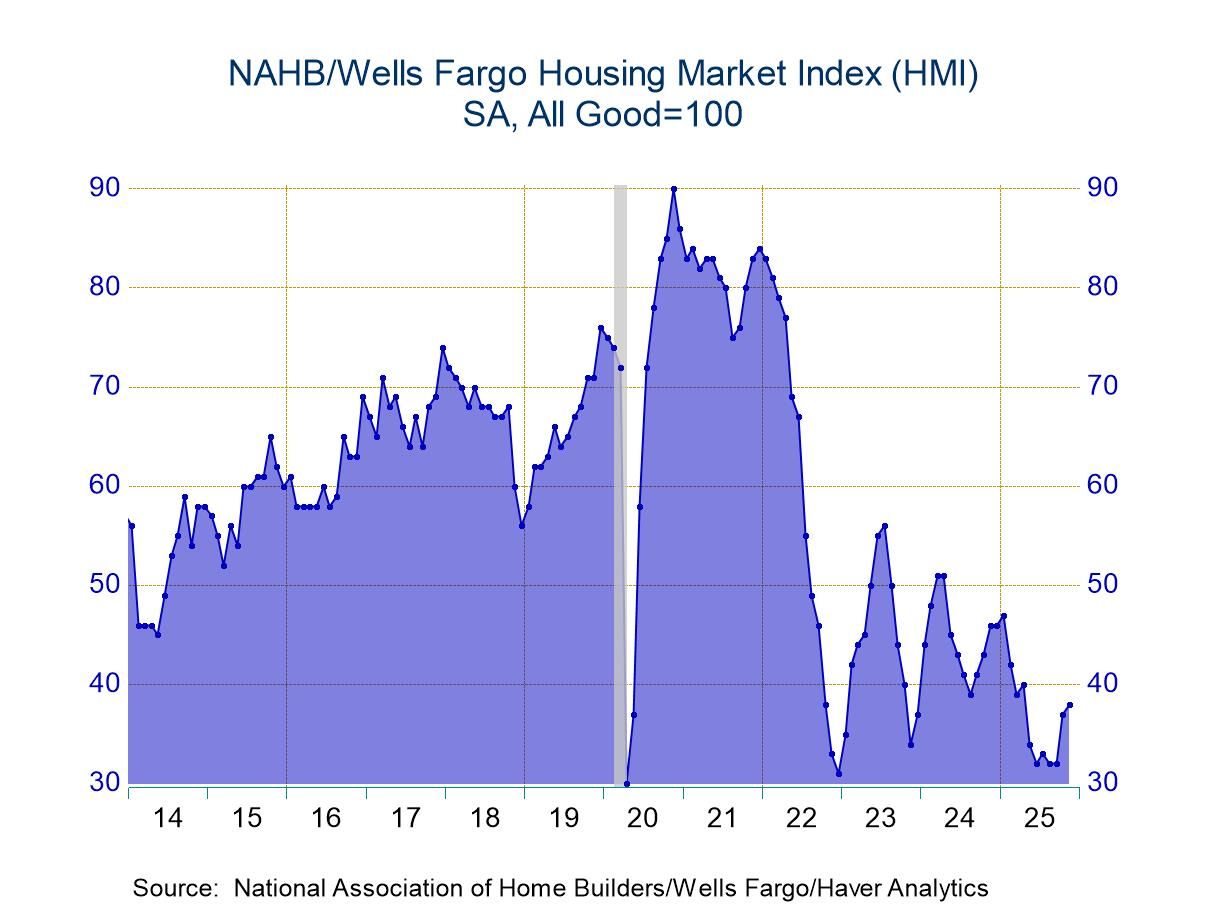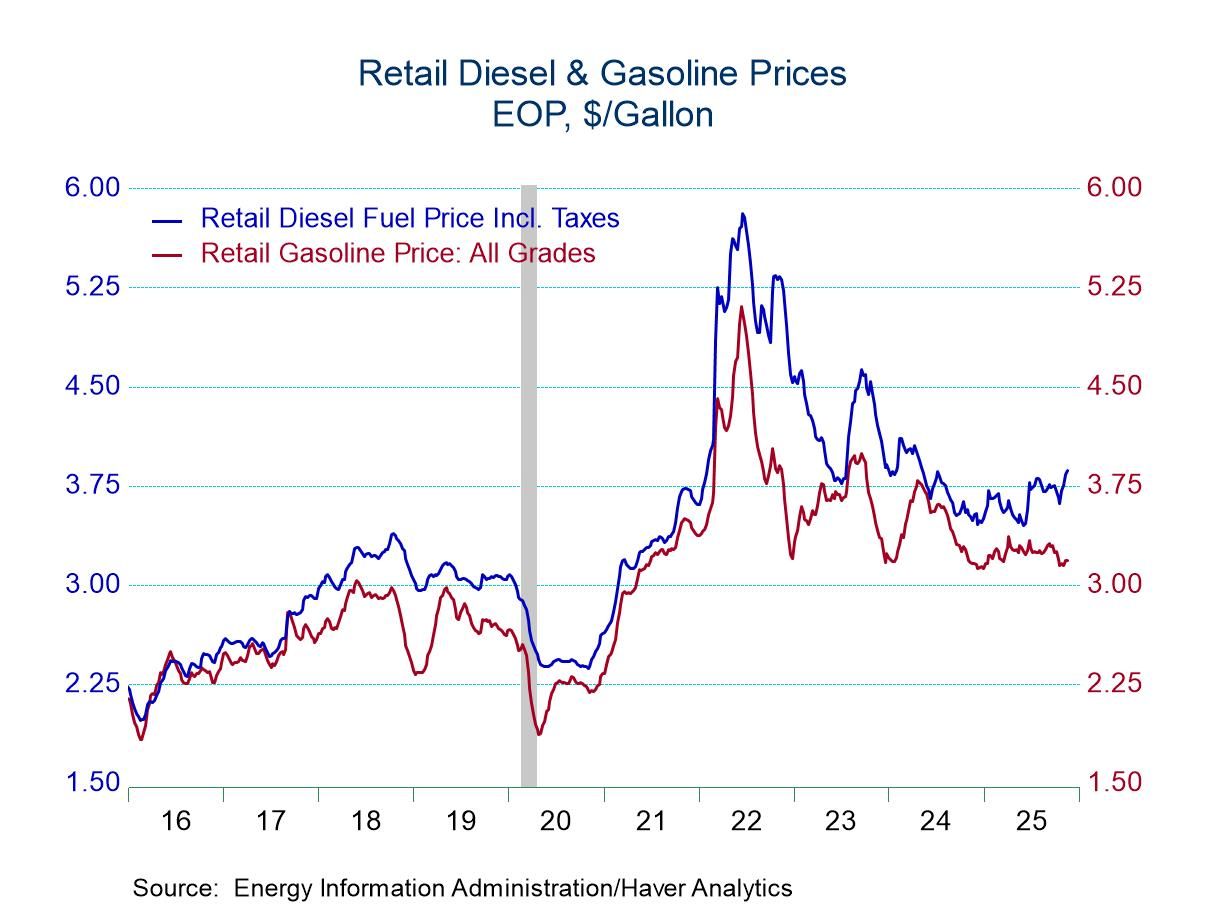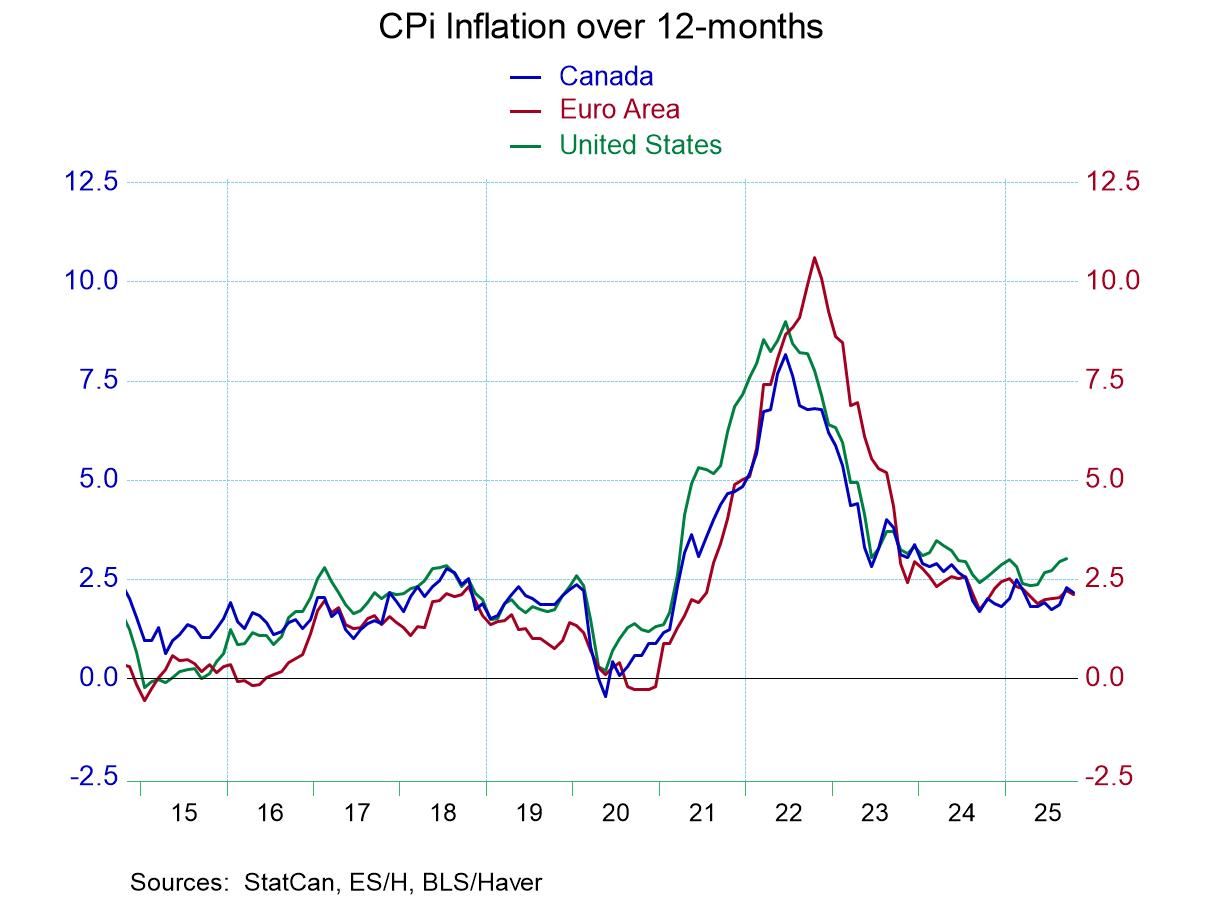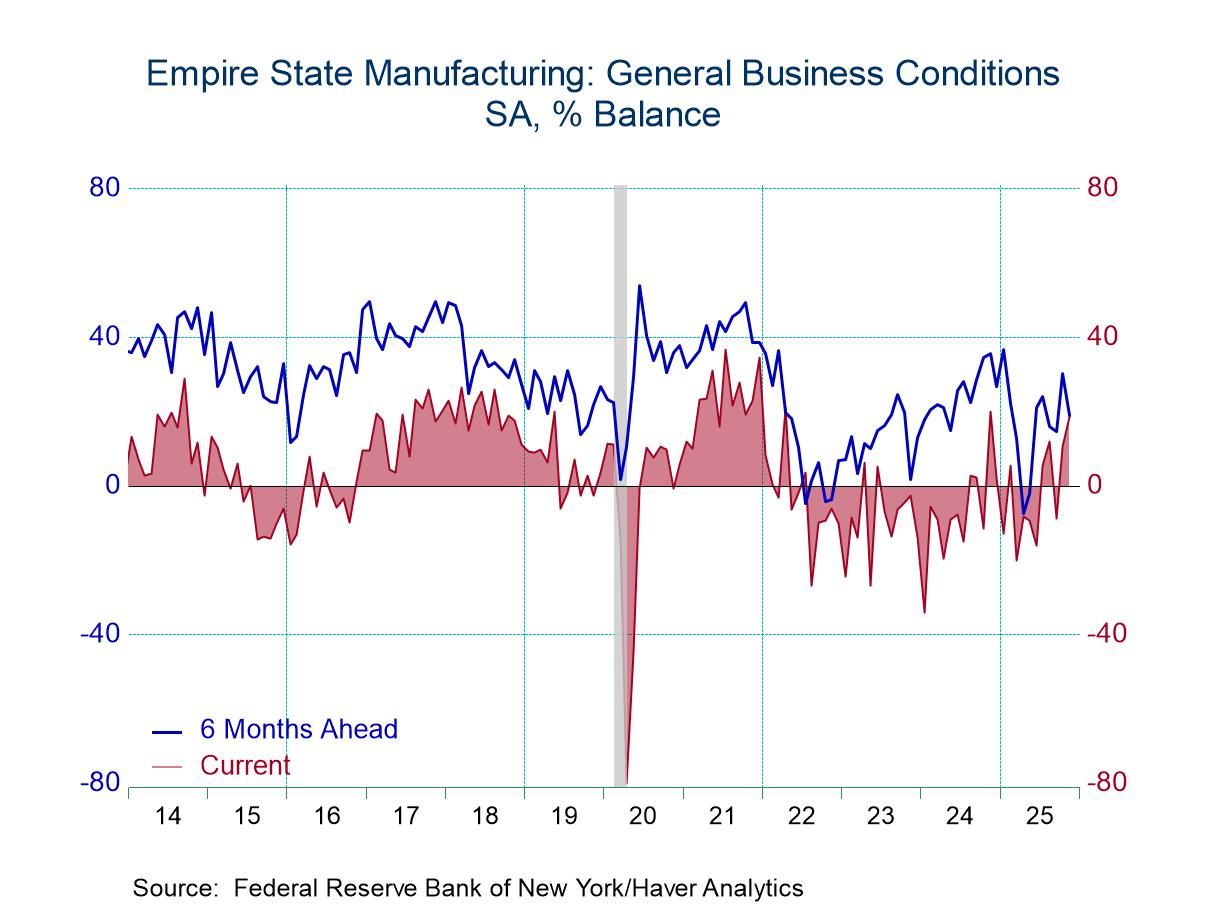 Global| Dec 02 2015
Global| Dec 02 2015U.S. ADP Reports Largest Payroll Increase Since June, Paced by Small Business
by:Tom Moeller
|in:Economy in Brief
Summary
The ADP/Moody's National Employment Report indicated that nonfarm private sector payrolls increased 217,000 during November following a 196,000 October gain, revised from 182,000. The latest was firmer than expectations for a 190,000 [...]
The ADP/Moody's National Employment Report indicated that nonfarm private sector payrolls increased 217,000 during November following a 196,000 October gain, revised from 182,000. The latest was firmer than expectations for a 190,000 rise in the Action Economics Forecast Survey. During the last ten years, there has been a 97% correlation between the change in the ADP figure and the change in nonfarm private sector payrolls as measured by the Bureau of Labor Statistics.
The ADP Research Institute survey is based on ADP's business payroll transaction system covering 411,000 companies and nearly 24 million employees. The data are processed by Moody's Analytics Inc., then calibrated and aligned with the BLS establishment survey data. The ADP data cover private sector employment, not government.
Small-businesses strengthened hiring by 81,000 workers (2.3% y/y) in November after a 91,000 rise in the prior month. Large businesses doubled the hiring rate m/m and added 74,000 (1.9% y/y) workers following a 37,000 October rise. That gain mostly reflected a jump in hiring by companies with 500 to 999 employees. Medium-sized businesses added to payrolls by 62,000 individuals (1.9% y/y) after a 67,000 increase.
Hiring in the goods-producing sector of the economy increased a lessened 13,000 (1.0% y/y). Hiring in the construction sector posted a 16,000 increase (4.7% y/y), roughly half the increases during the two months. Factory sector hiring rebounded 6,000 (0.2% y/y), after two months of decline. Service industry hiring grew a strengthened 204,000 last month (2.3% y/y), the largest increase since June. Payrolls in professional & business services jumped 59,000 (2.4% y/y) while hiring in trade, transportation & utilities industries improved 30,000 (1.9% y/y), the smallest rise in three months. Employment in financial activities increased 9,000 (1.9% y/y), the smallest rise since April.
The ADP National Employment Report data are maintained in Haver's USECON database; historical figures date back to April 2001 for the total and industry breakdown and back to January 2005 for the business size breakout. The expectation figure is available in Haver's AS1REPNA database.
The Economic Outlook and Monetary Policy is the title of today's speech by Fed Chair Janet L. Yellen and it is available here http://www.federalreserve.gov/newsevents/speech/yellen20151202a.htm
| ADP/Moody's National Employment Report | Nov | Oct | Sep | Nov Y/Y | 2014 | 2013 | 2012 |
|---|---|---|---|---|---|---|---|
| Nonfarm Private Payroll Employment (m/m chg, 000s) | 217 | 196 | 199 | 2.1% | 2.3% | 1.9% | 2.3% |
| Small Payroll (1-49) | 81 | 91 | 52 | 2.3 | 2.1 | 1.9 | 2.5 |
| Medium Payroll (50-499) | 62 | 67 | 46 | 1.9 | 2.8 | 2.2 | 2.1 |
| Large Payroll (>500) | 74 | 37 | 101 | 1.9 | 1.8 | 1.6 | 2.1 |
| Goods-Producing | 13 | 22 | 8 | 1.0 | 2.3 | 1.7 | 2.2 |
| Construction | 16 | 32 | 34 | 4.7 | 4.6 | 3.5 | 2.5 |
| Manufacturing | 6 | -2 | -17 | 0.2 | 1.2 | 0.9 | 1.6 |
| Service-Producing | 204 | 174 | 191 | 2.3 | 2.3 | 2.0 | 2.3 |
U.S. Productivity Growth Lifted by Revisions; Unit Labor Costs Also Strengthened
by Tom Moeller December 2, 2015
Nonfarm productivity during Q3'15 grew 2.2% at a seasonally adjusted annual rate, revised from 1.6%. The increase followed an unrevised 3.5% rise in Q2. The revised Q3 increase matched expectations in the Action Economics Forecast Survey. Real output growth of 1.8% (2.5% y/y) was revised from 1.2%. Hours worked eased 0.3% (+1.9% y/y), revised from -0.5%. Compensation per hour grew 4.0% (3.6% y/y) which was changed from 3.0%. The Q2 increase, however, was revised up even more sharply to 5.6% from 1.7%. As a result, unit labor cost growth last quarter was raised to 1.8% (3.0% y/y) from 1.4%, but the Q2 increase of 2.0% was lifted even more sharply from a 1.8% decline. A revised 1.0% rise in Q3 costs was expected.
Manufacturing sector productivity surged a little-revised 5.1% (1.5% y/y) during Q3, following a 2.2% increase. This remained the strongest gain in four years. Real factory-sector output grew 3.2% (2.0% y/y) but hours worked declined 1.8% (+0.4% y/y). Compensation per hour strengthened 7.5% (3.7% y/y), revised from 5.9%, but the 5.5% rise in Q2 was revised from no change. The Q3 rise was the firmest rise since Q1'14. As a result, unit labor cost growth of 2.3% (2.1% y/y) was revised from 0.8%. That followed a 3.3% Q2 gain which was revised from -2.0%.
The productivity & cost figures are available in Haver's USECON database. The expectations figures are from the Action Economics Forecast Survey and are found in the AS1REPNA database.
| Productivity & Costs (SAAR, %) | Q3'15 | Q2'15 | Q1'15 | Q3 Y/Y | 2014 | 2013 | 2012 |
|---|---|---|---|---|---|---|---|
| Nonfarm Business Sector | |||||||
| Output per Hour (Productivity) | 2.2 | 3.5 | -1.1 | 0.6 | 0.7 | 0.0 | 0.9 |
| Compensation per Hour | 4.0 | 5.6 | 1.5 | 3.6 | 2.7 | 1.1 | 2.7 |
| Unit Labor Costs | 1.8 | 2.0 | 2.6 | 3.0 | 2.0 | 1.1 | 1.7 |
| Manufacturing Sector | |||||||
| Output per Hour (Productivity) | 5.1 | 2.2 | -0.6 | 1.5 | 1.3 | 0.7 | 0.7 |
| Compensation per Hour | 7.5 | 5.5 | -2.2 | 3.7 | 2.7 | 0.2 | 1.8 |
| Unit Labor Costs | 2.3 | 3.3 | -1.6 | 2.1 | 1.4 | -0.5 | 1.0 |
U.S. Mortgage Loan Applications and Interest Rates Move Sideways
by Tom Moeller December 2, 2015
The Mortgage Bankers Association reported that its total Mortgage Market Volume Index was little-changed last week (20.0% y/y). Purchase applications increased 7.7% (30.2% y/y) but refinancing applications declined 6.0% (+13.% y/y).
The effective interest rate on a 15-year mortgage eased to 3.47%, but remained up from the October low of 3.28%. The effective rate on a 30-year fixed rate loan held w/w at 4.27% but the rate on a Jumbo 30-year loan was steady at 4.09%. For adjustable 5-year mortgages, the effective interest rate eased to 3.27%, but remained up from last month's low of 3.07%.
The average mortgage loan size declined to $268,000 (+5.8% y/y. For purchases, it fell to $300,300 (+6.2% y/y). For refinancings it eased to $243,300 (+4.0% y/y).
Applications for fixed interest rate loans increased 21.4% y/y, while adjustable rate loan applications improved 10.9% y/y.
The survey covers over 75 percent of all U.S. retail residential mortgage applications, and has been conducted weekly since 1990. Respondents include mortgage bankers, commercial banks and thrifts. The base period and value for all indexes is March 16, 1990=100. The figures for weekly mortgage applications and interest rates are available in Haver's SURVEYW database.
| MBA Mortgage Applications (SA, 3/16/90=100) | 11/27/15 | 11/20/15 | 11/13/15 | Y/Y % | 2014 | 2013 | 2012 |
|---|---|---|---|---|---|---|---|
| Total Market Index | 418.9 | 419.9 | 433.9 | 20.0 | 361.5 | 616.6 | 813.8 |
| Purchase | 228.1 | 211.7 | 212.8 | 30.2 | 172.1 | 197.5 | 187.8 |
| Refinancing | 1,516.9 | 1,612.9 | 1,694.8 | 13.1 | 1,449.8 | 3,070.0 | 4,505.0 |
| 15-Year Mortgage Effective Interest Rate (%) | 3.47 | 3.50 | 3.51 | 3.42 | 3.54 | 3.42 | 3.25 |
Tom Moeller
AuthorMore in Author Profile »Prior to joining Haver Analytics in 2000, Mr. Moeller worked as the Economist at Chancellor Capital Management from 1985 to 1999. There, he developed comprehensive economic forecasts and interpreted economic data for equity and fixed income portfolio managers. Also at Chancellor, Mr. Moeller worked as an equity analyst and was responsible for researching and rating companies in the economically sensitive automobile and housing industries for investment in Chancellor’s equity portfolio. Prior to joining Chancellor, Mr. Moeller was an Economist at Citibank from 1979 to 1984. He also analyzed pricing behavior in the metals industry for the Council on Wage and Price Stability in Washington, D.C. In 1999, Mr. Moeller received the award for most accurate forecast from the Forecasters' Club of New York. From 1990 to 1992 he was President of the New York Association for Business Economists. Mr. Moeller earned an M.B.A. in Finance from Fordham University, where he graduated in 1987. He holds a Bachelor of Arts in Economics from George Washington University.






